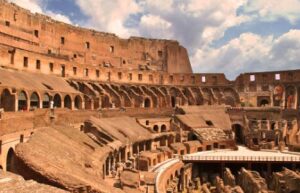The dawn of architecture heralded an era of ingenuity and creativity, as visionary individuals embarked on the monumental task of shaping the built environment. These pioneering architects laid the foundation for the structures we marvel at today, using innovative techniques and boundless imagination to construct enduring monuments to human achievement. Join us as we journey through the annals of history to explore the origins of architecture and the architects who paved the way for generations to come.

Introduction to Architectural Innovation
Architecture, the art and science of designing and constructing buildings, has been an integral part of human civilization since time immemorial. From humble dwellings to grand palaces, the built environment reflects the aspirations, beliefs, and cultural heritage of societies throughout history. The first architects, driven by a desire to create functional and aesthetically pleasing structures, laid the groundwork for the architectural wonders that would follow in their footsteps.
The Birth of Architecture: An Endless Quest for Shelter and Security
The origins of architecture can be traced back to the earliest human settlements, where primitive shelters provided protection from the elements and predators. These rudimentary structures, constructed from readily available materials such as wood, stone, and animal hides, laid the foundation for the evolution of architectural design and construction techniques. The first architects, faced with the challenges of limited resources and environmental constraints, employed innovative solutions to create habitable spaces that met the basic needs of their communities.
Architectural Innovation: From Functional Necessity to Artistic Expression
As human societies advanced and prospered, so too did the art of architecture. The first architects began to experiment with new materials, technologies, and design principles, pushing the boundaries of what was possible in the realm of building construction. From the monumental pyramids of ancient Egypt to the intricate temples of classical Greece, architectural innovation flourished as architects sought to express their cultural identity and aspirations through the built environment.
The Legacy of the First Architects
The legacy of the first architects is etched into the very fabric of human history, their contributions shaping the architectural landscape for millennia to come. Though their names may be lost to time, their achievements endure as a testament to the power of human creativity and ingenuity.
Engineering Marvels: Pushing the Boundaries of Possibility
The first architects were master craftsmen and engineers, capable of designing and constructing structures of staggering complexity and scale. From the towering ziggurats of ancient Mesopotamia to the awe-inspiring aqueducts of ancient Rome. These architectural marvels stand as testaments to the ingenuity and skill of their creators. The first architects pushed the boundaries of what was possible. Actively harnessing the forces of nature to create structures that would endure for centuries.
Cultural Icons: Expressing Identity and Belief
Architecture has always been more than just a means of shelter. It is a reflection of the values, beliefs, and aspirations of society. The first architects understood the power of architecture to shape identity and inspire awe. They used their craft to create buildings that served as symbols of cultural pride and religious devotion. From the majestic temples of ancient Egypt to the grand cathedrals of medieval Europe, these architectural icons continue to inspire wonder and reverence to this day.
The Evolution of Architectural Styles
Over time, architectural styles and techniques evolved. They did so in response to changing cultural, technological, and environmental factors. The first architects laid the groundwork for these developments, establishing a rich tradition of architectural innovation. One that continues to influence contemporary design practices.
Ancient Civilizations: The Birth of Monumental Architecture
The architectural achievements of ancient civilizations such as Egypt, Mesopotamia, and Greece. They laid the foundation for the development of monumental architecture. The first architects of these civilizations erected imposing structures that served as symbols of power, wealth, and religious devotion. From the pyramids of Giza to the Parthenon of Athens. These architectural masterpieces continue to inspire awe and admiration for their sheer scale and grandeur.
Medieval Europe: The Rise of Gothic Architecture
In medieval Europe, the first architects embraced new technologies and design principles. They did so to create the iconic cathedrals and castles that define the Gothic style. Characterized by soaring vaulted ceilings, pointed arches, and intricate stained glass windows. Gothic architecture represented a departure from the classical forms of antiquity. The first architects of the Gothic era pushed the boundaries of engineering and aesthetics. Thus creating buildings that embodied the spiritual aspirations of the age.
Conclusion: Honoring the Legacy of the First Architects
In conclusion, the first architects were visionaries and trailblazers. People whose pioneering spirit continues to inspire architects and designers to this day. Their innovative designs, engineering marvels, and cultural icons. They stand as testaments to the power of human creativity and ingenuity. We marvel at the architectural wonders of the past. Let us remember the architects who dared to dream and imagine a world transformed. Transformed by the beauty and majesty of their creations.
